Tokina AT-X 116 PRO DX II AF 11-16 mm f/2.8
3. Build quality
In the photo below the tested lens is positioned between the Canon EF-S 17-55 mm f/2.8 IS USM and the Sigma EX 1.4/30.
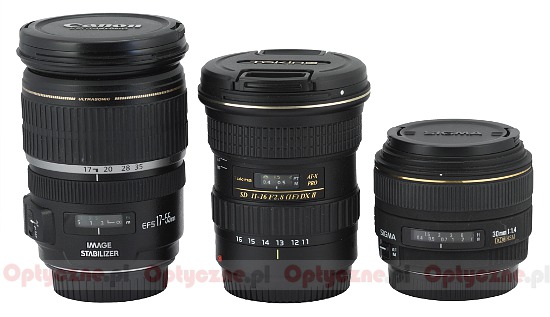 |
Please Support UsIf you enjoy our reviews and articles, and you want us to continue our work please, support our website by donating through PayPal. The funds are going to be used for paying our editorial team, renting servers, and equipping our testing studio; only that way we will be able to continue providing you interesting content for free. |
- - - - - - - - - - - - - - - - - - - - - - - - - - - - - - - - - - - - - - - - - - - - - - - -
The Tokina AT-X 116 PRO DX II AF 11–16 mm f/2.8 starts with a metal mount which surrounds contacts and a rear element, 22 mm in diameter. The element is mobile, positioned on the same level as the mount at 11 mm focal length. When passing to 16 mm it hides inside the tube about 1 cm deep. The adjacent area is very nicely blackened and matted.
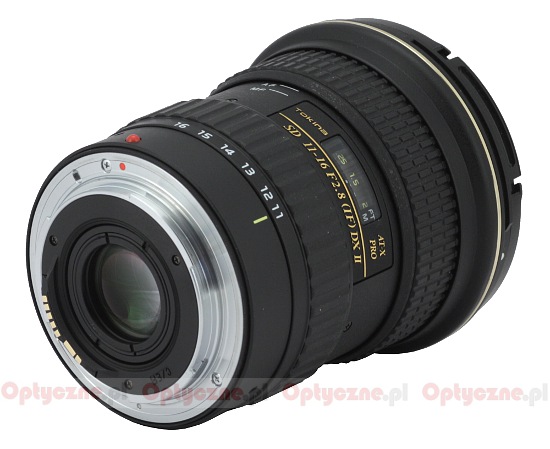 |
The first element of the proper tube of the lens is an immobile ring with a red dot, which makes the alignment with a camera easier, a serial number and an information that the lens was produced in Japan. Next there is a zoom ring, 22 mm wide. It is covered by ribs, very nice to the touch, and its work is even and properly damped. On it you can find focal length markings at 11, 12,13,14, 15, and 16 mm.
Further on, you meet a plate with the name and the parameters of the lens which surrounds a distance scale window, expressed in meters and feet. Then you can see a ribbed manual focus ring, very nice to the touch as well. In the MF mode it works properly well, allowing you some precise settings. Running through the whole distance range takes a turn through less than 90 degrees. Switching between AF and MF modes is a bit of a problem, though. The system is archaic, making manual readjusting of the focus in the AF mode impossible – perhaps only Tokina has been keeping that solution so long. If you want to change the mode you have to move the whole ring along the body of the lens. That movement is often so sudden that it moves the distance scale and change the value you’ve just set with so much care.
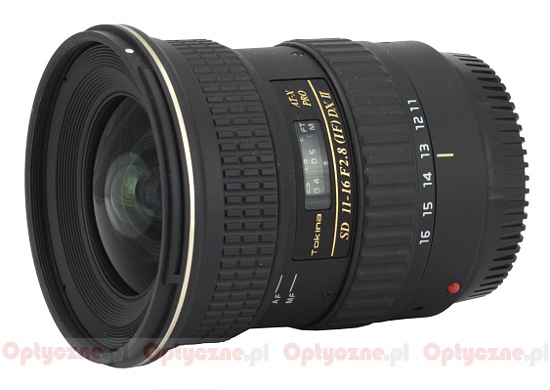 |
At the very end of the lens you can find a hood mount around a non-rotating filter thread, 77 mm in diameter. The filter, for a change, surrounds a front element, 49 mm in diameter.
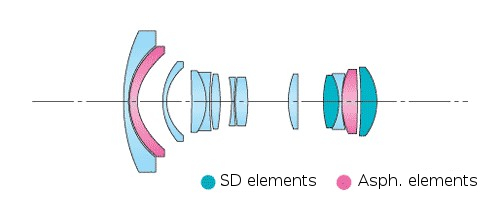 |
The optical construction of the tested lens consists of 13 elements positioned in 11 groups. Among them you can find two SD elements with a very low dispersion factor and two aspherical elements. Inside there is also a circular aperture with nine diaphragm blades which can be closed down to f/22.
Buyers get two caps and a petal-type hood in the box.
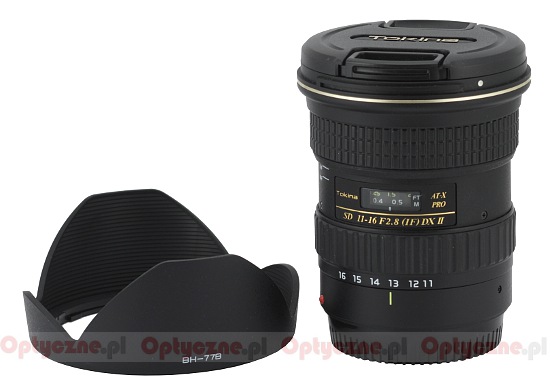 |






